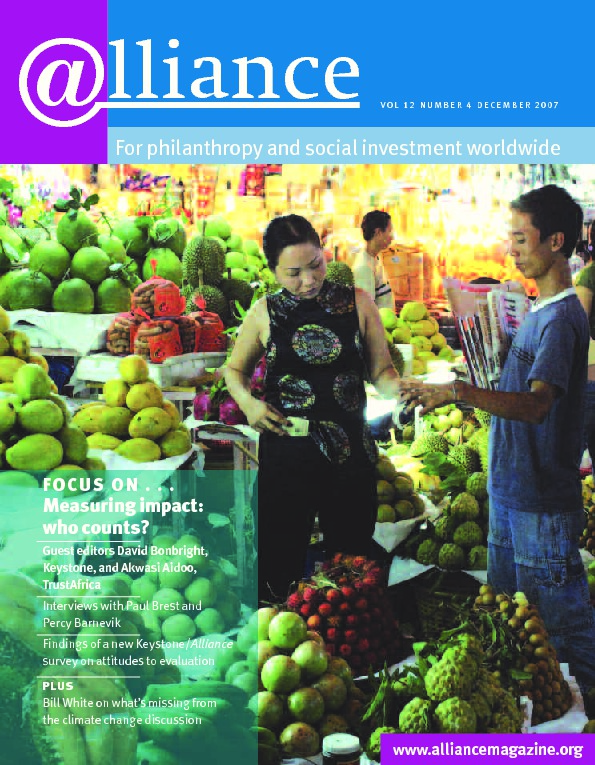This article is an attempt to chronicle the emergence of a new generation of concepts, tools, platforms and organizations designed to measure quality social change work. To give away the end of the story, it turns out that the trick to getting impact measurement right at ‘the organization’ is to move out of the organization into the larger ecosystem in which the organization lives.
When you do this, you can set measurement and reporting standards that carry incentives to collect and share impact measurement data in a way that maximizes learning for donors, ultimate beneficiaries, and everyone in between. The explanation of why this is so is not a short story, but I think it is one worth the telling.
Unlike in the business world, our ‘bottom line’ is well nigh impossible to measure with precision. As the articles in this issue show, measuring social impact (such as lasting improvements in opportunity, well-being or environmental sustainability) at all is complicated outrageously by difficulties associated with time lags, causality/attribution, aggregation and comparison. Just because it is difficult, however, does not mean we should not try to understand performance and impact. But we do need to accept that we are dealing with a high level of complexity, and that in order to come up with feasible ways of measuring, we are going to have to reject a host of inappropriate concepts and tools.
The good news is that much of this clearing out of inappropriate intellectual undergrowth has been done in the last ten years. Business concepts and tools still find their way uncritically into our impact measurement practices, but we are getting better at adapting them for our purposes. Whereas a decade ago there was a great clamour for ‘generally accepted principles’ of impact measurement based on a unified and quantifiable approach, current thinking favours a much friendlier pluralistic model in which qualitative, quantitative, perceptual and empirical data can be assembled into a comprehensible whole that still honours the complexity of social change. We are indeed beginning to find ways of seeing the simplicity on the other side of complexity. This is observable in the debates of relevant communities of practice such as GAN-Net’s Impact Community of Practice, BOND’s quality group, and the Outcome Mapping Learning Community of Practice.
Subscribe now from only £45 a year!
This article is only available for our subscribers
Existing users can login here




